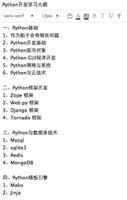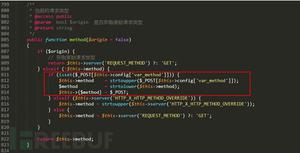如何在python中调用C语言代码

1.使用C扩展
CPython还为开发者实现了一个有趣的特性,使用Python可以轻松调用C代码
开发者有三种方法可以在自己的Python代码中来调用C编写的函数-ctypes,SWIG,Python/C API。每种方式也都有各自的利弊。
首先,我们要明确为什么要在Python中调用C?
常见原因如下: - 你要提升代码的运行速度,而且你知道C要比Python快50倍以上 - C语言中有很多传统类库,而且有些正是你想要的,但你又不想用Python去重写它们 - 想对从内存到文件接口这样的底层资源进行访问 - 不需要理由,就是想这样做
2.CTypes
Python中的ctypes模块可能是Python调用C方法中最简单的一种。ctypes模块提供了和C语言兼容的数据类型和函数来加载dll文件,因此在调用时不需对源文件做任何的修改。也正是如此奠定了这种方法的简单性。
示例如下
实现两数求和的C代码,保存为add.c
//sample C file to add 2 numbers - int and floats
#include <stdio.h>int add_int(int, int);
float add_float(float, float);
int add_int(int num1, int num2){
return num1 + num2;
}
float add_float(float num1, float num2){
return num1 + num2;
}
接下来将C文件编译为.so文件(windows下为DLL)。下面操作会生成adder.so文件
#For Linux$ gcc -shared -Wl,-soname,adder -o adder.so -fPIC add.c
#For Mac
$ gcc -shared -Wl,-install_name,adder.so -o adder.so -fPIC add.c
现在在你的Python代码中来调用它
from ctypes import *#load the shared object file
adder = CDLL(\'./adder.so\')
#Find sum of integers
res_int = adder.add_int(4,5)
print "Sum of 4 and 5 = " + str(res_int)
#Find sum of floats
a = c_float(5.5)
b = c_float(4.1)
add_float = adder.add_float
add_float.restype = c_float
print "Sum of 5.5 and 4.1 = ", str(add_float(a, b))
输出如下
Sum of 4 and 5 = 9
Sum of 5.5 and 4.1 = 9.60000038147
在这个例子中,C文件是自解释的,它包含两个函数,分别实现了整形求和和浮点型求和。
在Python文件中,一开始先导入ctypes模块,然后使用CDLL函数来加载我们创建的库文件。这样我们就可以通过变量adder来使用C类库中的函数了。当adder.add_int()被调用时,内部将发起一个对C函数add_int的调用。ctypes接口允许我们在调用C函数时使用原生Python中默认的字符串型和整型。
而对于其他类似布尔型和浮点型这样的类型,必须要使用正确的ctype类型才可以。如向adder.add_float()函数传参时, 我们要先将Python中的十进制值转化为c_float类型,然后才能传送给C函数。这种方法虽然简单,清晰,但是却很受限。例如,并不能在C中对对象进行操作。
3.SWIG
SWIG是Simplified Wrapper and Interface Generator的缩写。是Python中调用C代码的另一种方法。在这个方法中,开发人员必须编写一个额外的接口文件来作为SWIG(终端工具)的入口。
Python开发者一般不会采用这种方法,因为大多数情况它会带来不必要的复杂。而当你有一个C/C++代码库需要被多种语言调用时,这将是个非常不错的选择。
示例如下(来自SWIG官网)
example.c文件中的C代码包含了不同的变量和函数
#include <time.h>double My_variable = 3.0;
int fact(int n) {
if (n <= 1) return 1;
else return n*fact(n-1);
}
int my_mod(int x, int y) {
return (x%y);
}
char *get_time()
{
time_t ltime;
time(<ime);
return ctime(<ime);
}
example.i文件内容:
python;gutter:true;">%module example%{
/* Put headers and other declarations here */
extern double My_variable;
extern int fact(int);
extern int my_mod(int n, int m);
%}
extern double My_variable;
extern int fact(int);
extern int my_mod(int n, int m);
编译它
unix % swig -python example.iunix % gcc -c -fpic example.c example_wrap.c -I /usr/include/python2.7
unix % ld -shared example.o example_wrap.o -o _example.so
最后,Python的输出
>>> import example
>>> example.fact(5)
120
>>> example.my_mod(7,3)
1
>>> example.get_time()
\'Sun Feb 11 23:01:07 1996\'
>>>
我们可以看到,使用SWIG确实达到了同样的效果,虽然下了更多的工夫,但如果你的目标是多语言还是很值得的。
4.Python/C API
Python/C API可能是被最广泛使用的方法。它不仅简单,而且可以在C代码中操作你的Python对象。
这种方法需要以特定的方式来编写C代码以供Python去调用它。所有的Python对象都被表示为一种叫做PyObject的结构体,并且Python.h头文件中提供了各种操作它的函数。例如,如果PyObject表示为PyListType(列表类型)时,那么我们便可以使用PyList_Size()函数来获取该结构的长度,类似Python中的len(list)函数。大部分对Python原生对象的基础函数和操作在Python.h头文件中都能找到。
示例
编写一个C扩展,添加所有元素到一个Python列表(所有元素都是数字)
来看一下我们要实现的效果,这里演示了用Python调用C扩展的代码
#Though it looks like an ordinary python import, the addList module is implemented in C
import addList
l = [1,2,3,4,5]
print "Sum of List - " + str(l) + " = " + str(addList.add(l))
上面的代码和普通的Python文件并没有什么分别,导入并使用了另一个叫做addList的Python模块。唯一差别就是这个模块并不是用Python编写的,而是C。
接下来我们看看如何用C编写addList模块,这可能看起来有点让人难以接受,但是一旦你了解了这之中的各种组成,你就可以一往无前了。
//Python.h has all the required function definitions to manipulate the Python objects
#include <Python.h>//This is the function that is called from your python code
static PyObject* addList_add(PyObject* self, PyObject* args){
PyObject * listObj;
//The input arguments come as a tuple, we parse the args to get the various variables
//In this case it\'s only one list variable, which will now be referenced by listObj
if (! PyArg_ParseTuple( args, "O", &listObj ))
return NULL;
//length of the list
long length = PyList_Size(listObj);
//iterate over all the elements
int i, sum =0;
for (i = 0; i < length; i++) {
//get an element out of the list - the element is also a python objects
PyObject* temp = PyList_GetItem(listObj, i);
//we know that object represents an integer - so convert it into C long
long elem = PyInt_AsLong(temp);
sum += elem;
}
//value returned back to python code - another python object
//build value here converts the C long to a python integer
return Py_BuildValue("i", sum);
}
//This is the docstring that corresponds to our \'add\' function.
static char addList_docs[] =
"add( ): add all elements of the list\n";
/* This table contains the relavent info mapping -
<function-name in python module>, <actual-function>,
<type-of-args the function expects>, <docstring associated with the function>
*/
static PyMethodDef addList_funcs[] = {
{"add", (PyCFunction)addList_add, METH_VARARGS, addList_docs},
{NULL, NULL, 0, NULL}
};
/*
addList is the module name, and this is the initialization block of the module.
<desired module name>, <the-info-table>, <module\'s-docstring>
*/
PyMODINIT_FUNC initaddList(void){
Py_InitModule3("addList", addList_funcs,
"Add all ze lists");
}
逐步解释 - Python.h头文件中包含了所有需要的类型(Python对象类型的表示)和函数定义(对Python对象的操作) - 接下来我们编写将要在Python调用的函数, 函数传统的命名方式由{模块名}_{函数名}组成,所以我们将其命名为addList_add
- 然后填写想在模块内实现函数的相关信息表,每行一个函数,以空行作为结束 - 最后的模块初始化块签名为PyMODINIT_FUNC init{模块名}。
函数addList_add接受的参数类型为PyObject类型结构(同时也表示为元组类型,因为Python中万物皆为对象,所以我们先用PyObject来定义)。传入的参数则通过PyArg_ParseTuple()来解析。第一个参数是被解析的参数变量。第二个参数是一个字符串,告诉我们如何去解析元组中每一个元素。字符串的第n个字母正是代表着元组中第n个参数的类型。例如,"i"代表整形,"s"代表字符串类型, "O"则代表一个Python对象。接下来的参数都是你想要通过PyArg_ParseTuple()函数解析并保存的元素。这样参数的数量和模块中函数期待得到的参数数量就可以保持一致,并保证了位置的完整性。例如,我们想传入一个字符串,一个整数和一个Python列表,可以这样去写
int n;
char *s;
PyObject* list;
PyArg_ParseTuple(args, "siO", &n, &s, &list);
在这种情况下,我们只需要提取一个列表对象,并将它存储在listObj变量中。然后用列表对象中的PyList_Size()函数来获取它的长度。就像Python中调用len(list)。
现在我们通过循环列表,使用PyList_GetItem(list, index)函数来获取每个元素。这将返回一个PyObject*对象。既然Python对象也能表示PyIntType,我们只要使用PyInt_AsLong(PyObj *)函数便可获得我们所需要的值。我们对每个元素都这样处理,最后再得到它们的总和。
总和将被转化为一个Python对象并通过Py_BuildValue()返回给Python代码,这里的i表示我们要返回一个Python整形对象。
现在我们已经编写完C模块了。将下列代码保存为setup.py
#build the modules
from distutils.core import setup, Extensionsetup(name=\'addList\', version=\'1.0\', \
ext_modules=[Extension(\'addList\', [\'adder.c\'])])
并且运行
python setup.py install
现在应该已经将我们的C文件编译安装到我们的Python模块中了。
在一番辛苦后,让我们来验证下我们的模块是否有效
#module that talks to the C code
import addList
l = [1,2,3,4,5]
print "Sum of List - " + str(l) + " = " + str(addList.add(l))
输出结果如下
Sum of List - [1, 2, 3, 4, 5] = 15
如你所见,我们已经使用Python.h API成功开发出了我们第一个Python C扩展。这种方法看似复杂,但你一旦习惯,它将变的非常有效。
Python调用C代码的另一种方式便是使用Cython让Python编译的更快。但是Cython和传统的Python比起来可以将它理解为另一种语言,所以我们就不在这里过多描述了。
以上是 如何在python中调用C语言代码 的全部内容, 来源链接: utcz.com/z/386487.html





